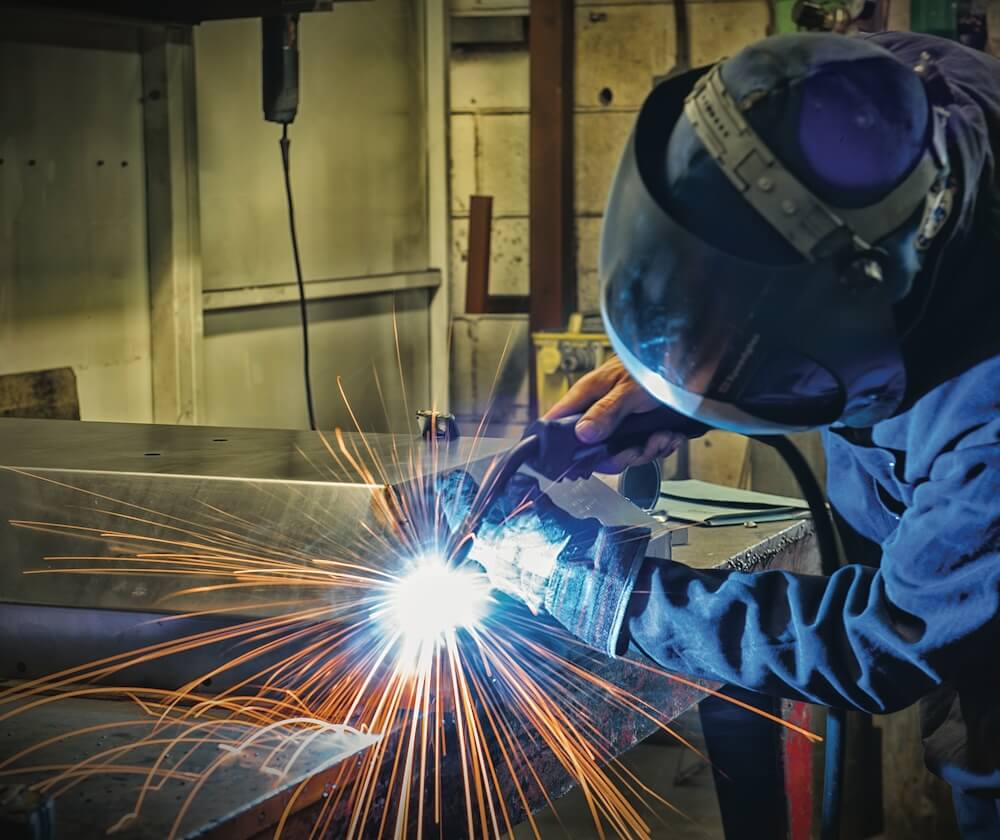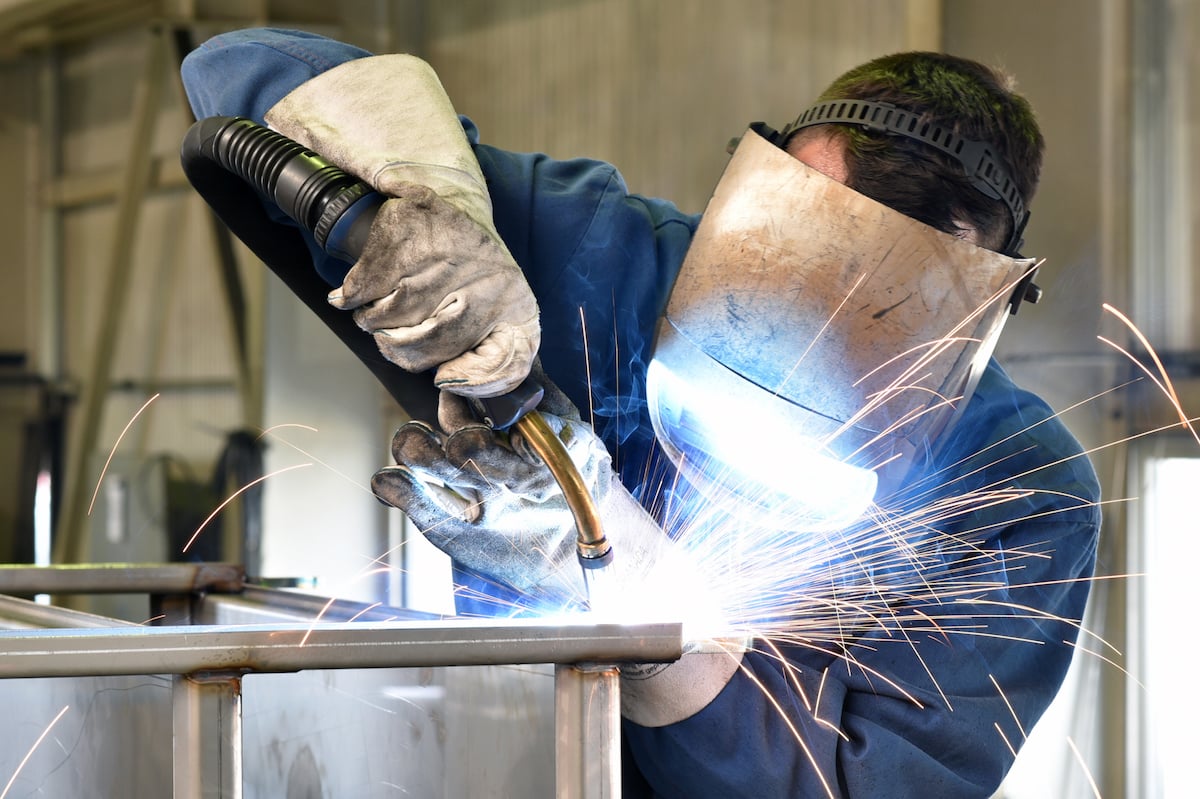How overheating affects welds and Montana Mobile Welding and Repair Welding’s approach to fix it
Everything about Welding: Key Insights Into Techniques and Finest Practices for Success
Welding includes a range of methods, each suited for certain products and applications. Comprehending these techniques, such as GMAW, SMAW, and TIG, is essential for attaining excellent outcomes. The right tools and safety and security practices can not be forgotten. As prep work and troubleshooting play vital functions in the welding procedure, understanding these elements can considerably enhance the top quality of the end product. What are the vital factors that guarantee an effective weld?
Recognizing Different Welding Strategies
Welding methods encompass a selection of methods, each suited to certain applications and materials. Amongst the most usual strategies are Gas Metal Arc Welding (GMAW), Shielded Steel Arc Welding (SMAW), and Tungsten Inert Gas Welding (TIG) GMAW, also called MIG welding, is prominent for its rate and versatility, making it optimal for thin products. SMAW, or stick welding, is preferred for its simpleness and performance in outdoor environments, especially with thicker steels. TIG welding offers accuracy and control, making it appropriate for detailed work and non-ferrous steels (Montana Mobile Welding and Repair Belgrade). Each technique has its one-of-a-kind advantages and considerations, permitting welders to choose the most effective method based upon the task's demands, material kind, and wanted end results. Comprehending these strategies is crucial for successful welding
Vital Welding Tools and Devices
While various welding strategies need details skills, the appropriate equipment and tools are just as crucial for achieving top quality results. Crucial welding devices consists of welding makers, which differ relying on the strategy-- such as MIG, TIG, or stick welding. Safety equipment, including aprons, gloves, and headgears, guarantees security and convenience during the procedure. On top of that, components and clamps aid secure materials in position, guaranteeing accuracy in welds. Consumables like welding poles, cord, and shielding gas are likewise important components that affect the top quality of the weld. Furthermore, tools such as cutters and grinders facilitate surface area prep work and post-weld completing, adding to an expert result. Purchasing high-grade tools eventually enhances the effectiveness and efficiency of welding projects.
Safety Practices in Welding
Correct security methods are vital in the welding sector to shield employees from prospective risks. Welders need to wear suitable individual safety tools (PPE), including helmets with appropriate shading, handwear covers, and flame-resistant clothes. Sufficient air flow is vital to lower direct exposure to hazardous fumes and gases created during the welding procedure. Furthermore, workers should be learnt the correct handling of welding equipment to avoid accidents. Fire security procedures, such as maintaining flammable products far from the welding location and having fire extinguishers conveniently available, are needed. Routine evaluations of tools and work spaces can help recognize potential risks prior to they result in accidents. By sticking to these safety methods, welders can produce a more secure working setting and reduce threats related to their profession.
Readying Products for Welding
Preparing products for welding is an essential action that greatly influences the high quality and stability of the end product (Montana Mobile Welding and Repair Belgrade Welding). Correct prep work entails cleaning the surface areas to eliminate pollutants such as dirt, oil, and corrosion, which can compromise the weld. Strategies such as grinding, sanding, or making use of solvents are generally utilized to achieve a clean surface area. Furthermore, guaranteeing that the products mesh snugly is important; voids can cause weak welds. It's additionally essential to consider the alignment and positioning of the elements, as this will impact the simplicity of welding and the last outcome. Finally, choosing the proper filler material and ensuring compatibility with the base metals is vital for accomplishing solid, long lasting welds
Tips for Getting High-Quality Welds
Accomplishing premium welds calls for interest to detail and adherence to best methods throughout the welding process. Appropriate joint prep work is crucial, guaranteeing surface areas are tidy and free from impurities. Picking the suitable filler product and welding method based upon the base metals is important for optimal bonding. Maintaining constant traveling speed and angle while welding can promote and stop problems harmony. In addition, regulating heat input is crucial; excessive heat can result in warping and damaged joints. Regularly checking the welds during the process enables instant changes if required. Utilizing ideal post-weld treatments, such as cleansing and stress and anxiety alleviation, can improve the longevity and stability of the weld, eventually guaranteeing a successful result.
Fixing Typical Welding Issues
Welding usually provides difficulties that can impact the top quality and honesty of the final product. Common concerns such as porosity, irregular weld beads, and overheating can emerge, each requiring specific repairing methods. Comprehending these issues is crucial for welders to improve their abilities and accomplish perfect outcomes.
Porosity Issues Explained
Although porosity can often be ignored, it continues to be a vital concern in welding that can compromise the stability of an ended up product. Porosity refers to the visibility of tiny gas pockets within the weld bead, which can damage the joint and lead to early failure. This problem usually arises from pollutants, dampness, or improper shielding gas insurance coverage during the welding process. To alleviate porosity, welders should validate that the base products are completely dry and tidy, utilize proper shielding gases, and preserve constant welding specifications. Regularly inspecting the devices and setting can also help determine possible concerns before they materialize in the weld. Attending to porosity successfully is important for accomplishing strong, long lasting welds that fulfill top quality criteria.

Inconsistent Weld Beads
Inconsistent weld grains can greatly affect the quality and stamina of an ended up item. useful reference Different variables contribute to this problem, consisting of incorrect travel speed, incorrect amperage settings, and irregular electrode angles. When the welder relocates as well rapidly, a grain may show up slim and lack infiltration, while relocating also slowly can cause extreme build-up. In addition, making use of the incorrect amperage can result in either undercutting or extreme spatter, both of which concession weld honesty. The welder's strategy, such as inconsistent torch motion, can additionally cause uneven grain appearance. To alleviate these problems, welders must concentrate on maintaining steady, controlled activities and ensuring correct devices settings to attain harmony in their welds. Uniformity is vital to achieving trusted and solid welds.
Getting Too Hot and Bending Issues
Excessive heat throughout the welding process can cause significant overheating and deforming concerns, influencing the structural honesty of the work surface. These issues commonly materialize as distortion, which can jeopardize placement and fit-up, making more setting up testing. Aspects adding to overheating include the choice of welding criteria, such as voltage and take a trip rate, as well as the kind of product being bonded. To learn the facts here now minimize these concerns, welders need to maintain constant travel rate and ideal warm input while monitoring the work surface temperature level. Furthermore, pre-heating or post-weld heat therapy can assist alleviate stresses triggered by fast air conditioning - Montana Mobile Welding and Repair Belgrade. Normal examination and adherence to finest practices are crucial in protecting against getting too hot and guaranteeing the durability and integrity of bonded frameworks
Often Asked Inquiries
What Are the Job Opportunities in the Welding Market?
The welding industry uses diverse occupation opportunities, including placements as welders, inspectors, educators, and designers. Specialists can operate in manufacturing, building and construction, aerospace, and automobile markets, taking advantage of strong need and affordable incomes in numerous duties.
Just How Can I Improve My Welding Rate Without Sacrificing Top Quality?
To improve welding speed without compromising quality, one need to practice reliable techniques, keep tools, enhance setups, and improve hand-eye control. Normal training and looking for feedback can likewise greatly add to achieving much faster, high-quality welds.
What Qualifications Are Offered for Welders?
Various certifications exist for welders, including those from the American Welding Society (AWS), the National Center for Construction Education and Research (NCCER), and various industry-specific companies. These qualifications boost employability and demonstrate skill proficiency.
How Does Welding Affect the Features of Metals?
Welding affects the buildings of steels by modifying their microstructure, which can bring about modifications in hardness, strength, and ductility. Heat input and air conditioning prices throughout the procedure considerably affect these material attributes.
Can I Bonded Dissimilar Metals Together?
